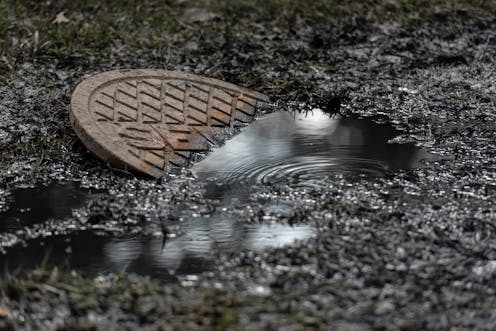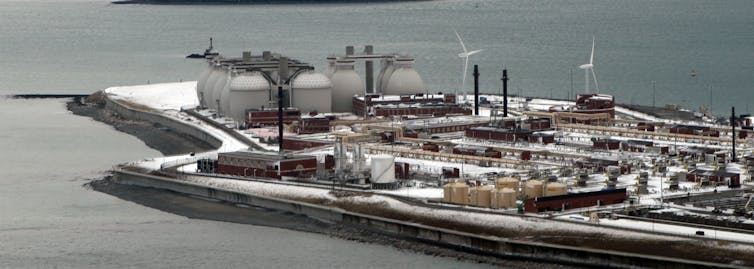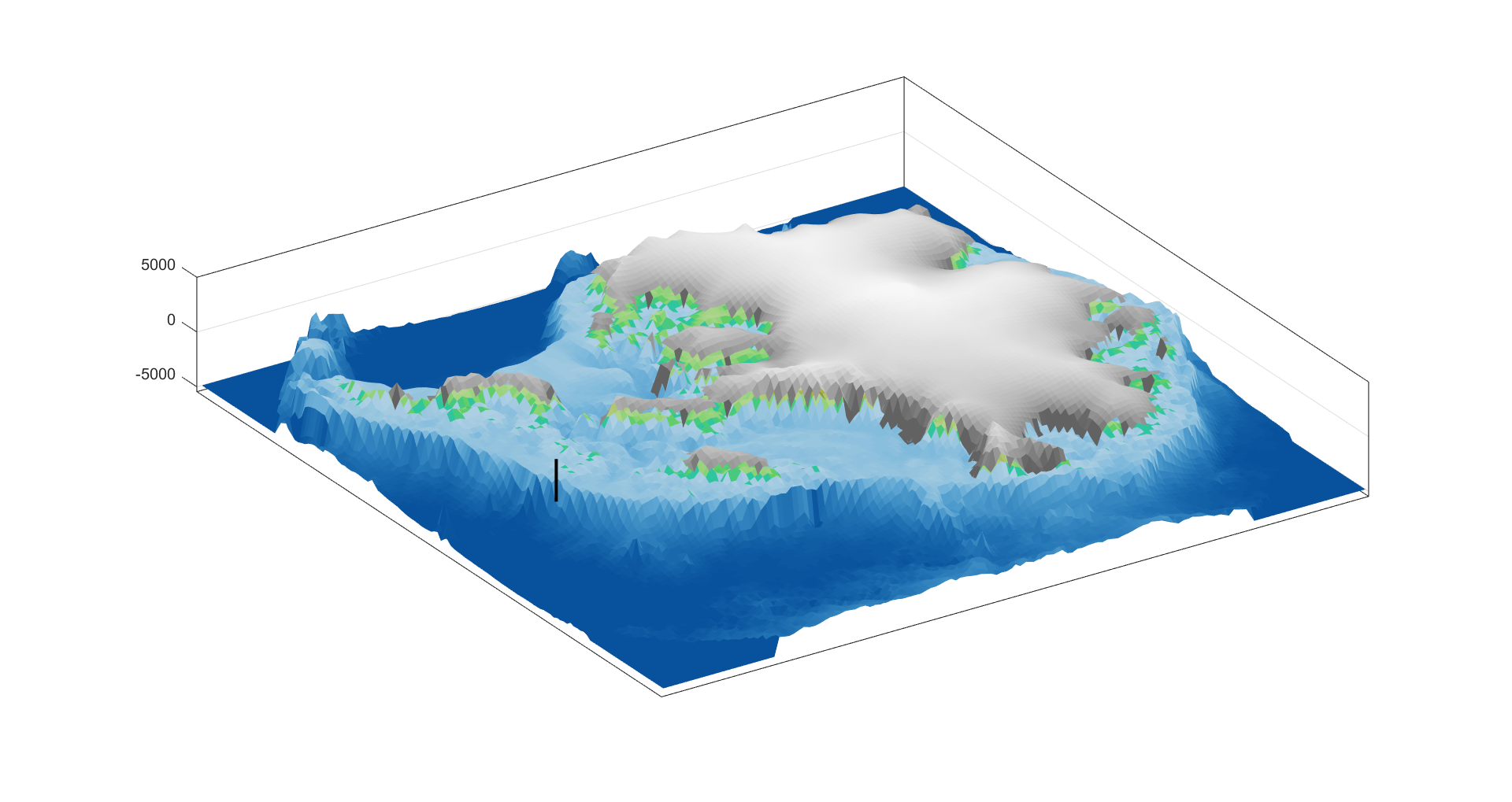How to steer money for drinking water and sewer upgrades to the communities that need it most
Congress has approved billions of dollars to fix water and sewer systems across the US. But getting that money to needy communities depends on how states define a key word.

When storms like Hurricane Ian strike, many people have to cope afterward with losing water service. Power outages mean that pumps can’t process and treat drinking water or sewage, and heavy stormwater flows can damage water mains.
Ian’s effects echoed a similar disaster in Jackson, Mississippi, where rising river water overwhelmed pumps at the main water treatment plant on Aug. 29, 2022, following record-setting rain. The city had little to no running water for a week, and more than 180,000 residents were forced to find bottled water for drinking and cooking. Even after water pressure returned, many Jackson residents continued to boil their water, questioning whether it was really safe to drink.
Jackson had already been under a boil-water notice for more than a month before the crisis, which arrived like a slow-motion bullet to the city’s long-decaying infrastructure. Now, Jackson and its contractors face lawsuits and a federal investigation.
We study water policy with a focus on providing equitable access to clean water. Our research shows that disadvantaged communities have suffered disproportionately from underinvestment in clean and affordable water.
However, a historic increase in federal water infrastructure funding is coming over the next five years, thanks to the Infrastructure Investment and Jobs Act that was enacted in 2021.
If this funding is managed smartly, we believe it can start to right these wrongs.
A complex funding mix
Water infrastructure has two parts. Drinking water systems bring people clean water that has been purified for drinking and other uses. Wastewater systems carry away sewage and treat it before returning it to rivers, lakes or the ocean.
Money to build and maintain these systems comes from a mix of federal, state and local sources. Over the past 50 years, policymakers have debated how much each level of government should contribute, and what fraction should come from the most prized source: federal money that does not need to be repaid.
The 1972 Clean Water Act created a federal grant program, managed by the Environmental Protection Agency, to help states and municipalities build wastewater treatment plants. Under the program, federal subsidies initially covered 75% of project costs.

In the 1980s, the Reagan Administration challenged this arrangement. Conservatives argued that the grant program’s main purpose – addressing the need for more municipal wastewater treatment – had been fulfilled.
In 1987, Congress replaced wastewater grants with a loan program called the Clean Water State Revolving Fund, which still operates today. The EPA uses the fund to provide seed money to states, which offer low-interest loans to local governments to build and maintain wastewater treatment plants. Congress created a corresponding program, the Drinking Water State Revolving Fund, in 1996 to fund drinking water infrastructure.
As a result, U.S. water infrastructure now is funded by a mix of loans that must be repaid, principal forgiveness awards and grants that do not require repayment, and fees paid by local users. The larger the share that can be shifted into grants and principal forgiveness, the less pressure on local ratepayers to foot the bill for long-term infrastructure investments.
What’s in the infrastructure law
The Infrastructure Investment and Jobs Act authorizes more than US$50 billion for water infrastructure over the next five years. This won’t close the gap in funding needs, which the EPA has estimated at $472.6 billion from 2015 through 2034 just for drinking water systems. But it could support tangible improvements.
When water systems that serve low-income communities borrow money from state programs, even at low interest rates, they have to pay the loans off by raising rates on customers who already struggle to pay their bills. To reduce this burden, federal law allows state programs to provide “disadvantaged communities” additional subsidies in the form of principal forgiveness and grants. However, states have broad discretion in determining who qualifies.
The infrastructure law requires that 49% of federal funding for both drinking water and wastewater infrastructure must be awarded as additional subsidies to disadvantaged communities. In other words, almost half the money that states receive in federal funds must be awarded as principal forgiveness or outright grants to disadvantaged communities.
Who counts as ‘disadvantaged’?
In March 2022, the EPA released a memorandum that calls the infrastructure law a “unique opportunity” to “invest in communities that have too often been left behind – from rural towns to struggling cities.” The agency pledged to work with states, tribes and territories to ensure the promised 49% of supplemental funding reaches communities where the need is greatest.
This is an issue where the devil truly is in the details.
For example, under Mississippi’s definition of “disadvantaged community,” Jackson’s 2021 award for principal forgiveness was capped at 25% of the original principal. In its March 2022 memorandum, the EPA identified such caps as obstacles for under-resourced communities.
Mississippi appears to have responded by using a new standard for funds coming from the infrastructure law. Beginning this year, communities whose median household income is lower than the state median household income – including Jackson – will be awarded 100% principal forgiveness, which makes the funding effectively a grant.
Additionally, the EPA discourages using population as a factor to define “disadvantaged communities.” Communities with smaller populations struggle to cover water systems’ operating costs, so that challenge is important to consider. But using population as a determining factor penalizes larger cities that may otherwise be disadvantaged.
For example, in 2021, when determining principal forgiveness, Wisconsin awarded a higher financial need score to communities with populations below 10,000. This penalized Milwaukee, the state’s largest city, with almost a quarter of its people experiencing poverty.
In September 2022, Wisconsin updated its definition to consider additional factors, such as county unemployment rate and family poverty percentage. With these changes, Milwaukee now qualifies for the maximum principal forgiveness.
Mississippi and Wisconsin previously relied on factors too narrow to reach many disadvantaged communities. We hope the steps they have taken to update their programs will inspire similar actions from other states.
Getting the word out
In our view, the Infrastructure Investment and Jobs Act is a once-in-a-generation opportunity to correct decades of underinvestment in disadvantaged communities, especially with the EPA pushing the states to do so.
Historically under-resourced communities may not be aware of these state program funds, or know how to apply for them, or carry out infrastructure improvements. We believe the EPA should direct states that receive federal funds to help under-resourced communities apply for and use the money.
Recent events in Jackson and Florida show how natural disasters can overwhelm water systems, especially older networks that have been declining for years. As climate change amplifies storms and flooding, we see investing in water systems as a priority for public health and environmental justice across the U.S.
Melissa Scanlan is affiliated with Midwest Environmental Advocates, a non-profit environmental law center.
Andrian Lee does not work for, consult, own shares in or receive funding from any company or organization that would benefit from this article, and has disclosed no relevant affiliations beyond their academic appointment.
Read These Next
New materials, old physics – the science behind how your winter jacket keeps you warm
Winter jackets may seem simple, but sophisticated engineering allows them to keep body heat locked in,…
Deepfakes leveled up in 2025 – here’s what’s coming next
After a year of fast advances, deepfakes are entering a new era defined by real-time interaction with…
Resolve to network at your employer’s next ‘offsite’ – research shows these retreats actually help f
Because they can help you get to know more of your co-workers, offsites may build the kind of trust…






